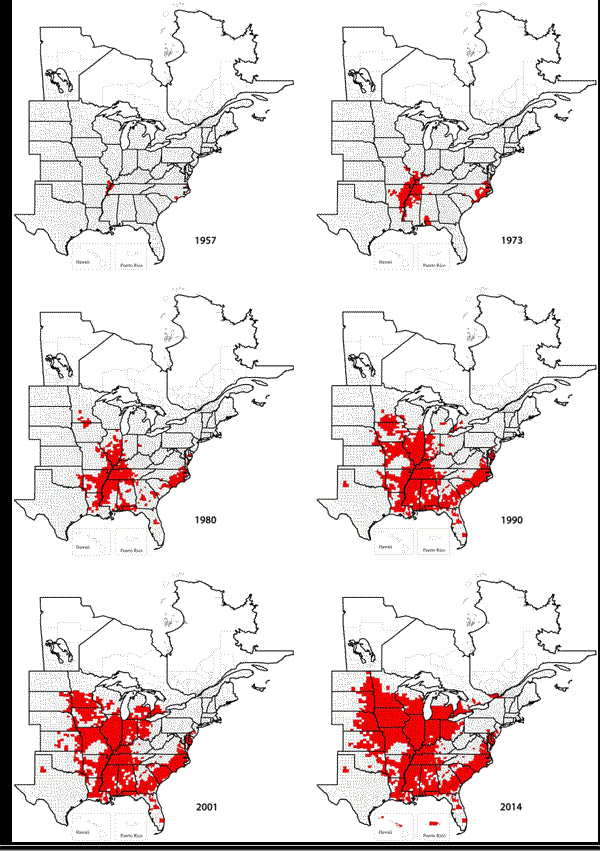Sampling for SCN
Interest has been steadily growing in soil sampling for Soybean Cyst Nematode (SCN), and with good reason. SCN continues to be the leading yield loss pathogen in U.S. soybean production. The impacts of SCN continue to grow as the pest continues to spread throughout the soybean production acres of the U.S. The map below shows how SCN has spread from a small isolated area along the Mississippi River in 1957 to the last survey in 2014. It is particularly concerning how quickly the area affected has expanded since 2001.

https://www.soybeanresearchinfo.com/diseases/scnpics/SCN_dist57_14_lg.gif
The spread of SCN through the Great Lakes region, increased focus on high yield soybeans, the potential link of Sudden Death Syndrome to plants experiencing SCN feeding, and new products on the market showing some level of SCN control has increased the interest in sampling for SCN.
Sampling for SCN can take two forms: a diagnostic approach to identify a crop issue, or a proactive management approach looking at whole field SCN levels to determine future planned management activities. Each of the approaches have different sampling procedures and interpretations, but utilize the same laboratory procedures. A N-CYST test from A&L Great Lakes Laboratories provides a count of both SCN eggs and adult SCN cysts which are used to identify treatment and management thresholds.
A diagnostic approach is used when a yellow and stunted area of a soybean field is suspected to have elevated SCN populations leading to the visual symptoms. In this case, soil sampling for SCN will be targeted to verify the presence and amount of SCN in the affected area. While visual inspection of the roots can note the presence of SCN, it does not quantify the population. SCN may be present, but at populations below the threshold at which injury should occur. To properly sample for SCN, 8 or more soil sample cores should be taken 6 to 8 inches deep in the affected area. If the field has a history of elevated SCN levels it may be advisable to take a sample from a portion of the field not showing visual symptoms to collect comparative data. Place the soil cores in a clean plastic bucket. Once all of the cores are collected, thoroughly mix the sample and place two cups of soil into a sealed and labeled soil sample bag or plastic bag. The samples should be sealed to avoid moisture loss and protected from extreme temperatures; do not freeze or refrigerate, or leave in the dash of the truck on a summer day. A cooler can be very helpful for sample storage during collection. If the samples are handled in such a way that lead to cyst death, the adult counts will be negatively impacted. Ship or deliver to the lab a quickly as possible.
As a tool for proactive management of SCN, whole field samples can be collected to identify average SCN populations across a field or region of a field. This method is helpful in identifying fields that need additional management to address SCN, but populations can be underestimated when sampling a large area, because small areas of very high SCN populations can be diluted with unaffected areas. Whole field sampling for SCN mirrors traditional whole field composite soil fertility samples. Take samples late in the growing season after flower through harvest. Collect a minimum of 10 to 20 soil cores to a depth of 6 to 8 inches, while walking in a zig-zag pattern across the field, and place the soil cores in a clean plastic bucket. Once all of the cores are collected, thoroughly mix the sample and place two cups of soil into a sealed and labeled plastic bag. Again protect the samples from drying out and from extreme temperatures while shipping the samples to the laboratory as quickly as possible.
For any additional questions regarding SCN sampling, feel free to contact your A&L Great Lakes Laboratories agronomist or call the laboratory directly at 260-483-4759.


